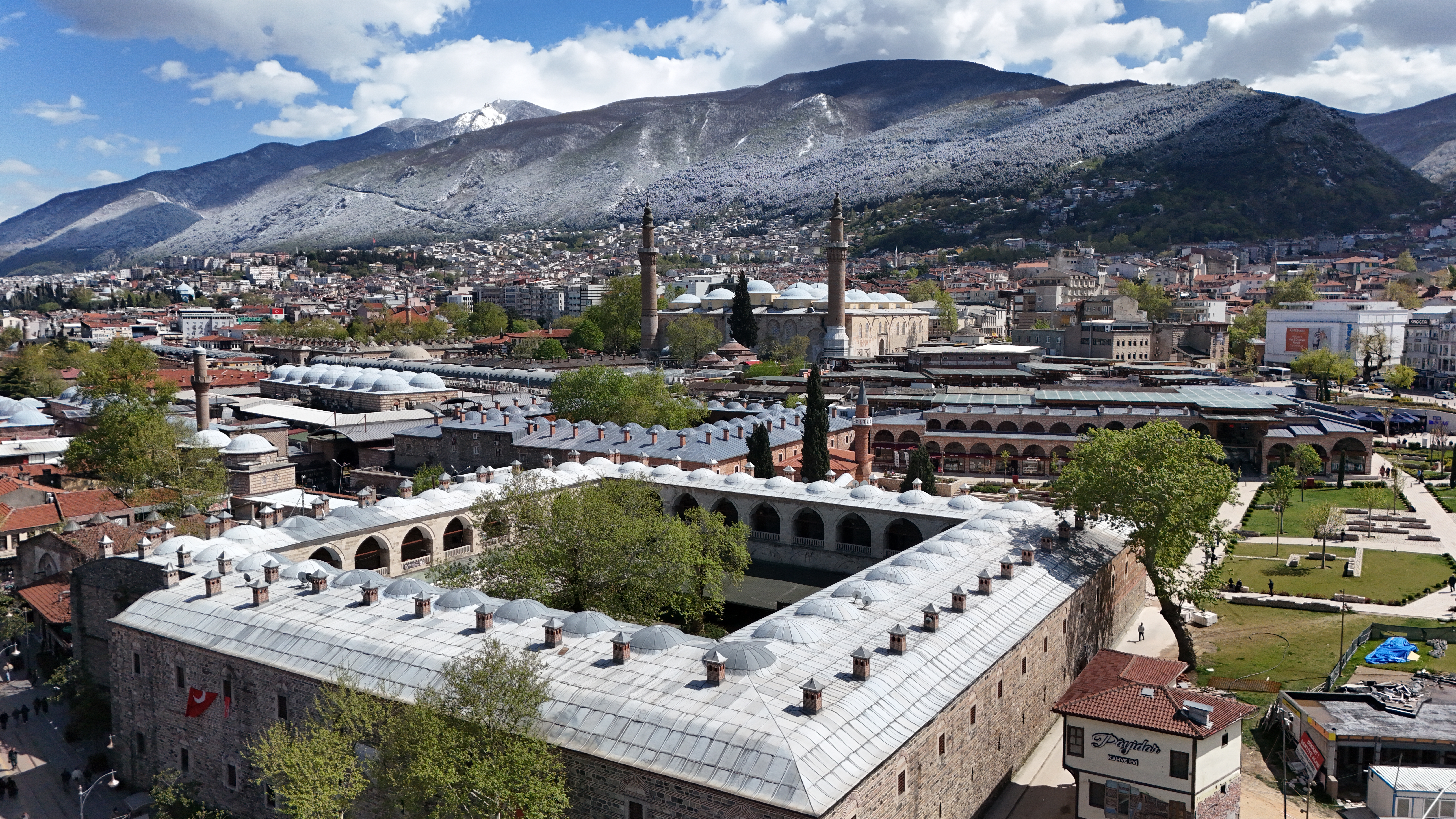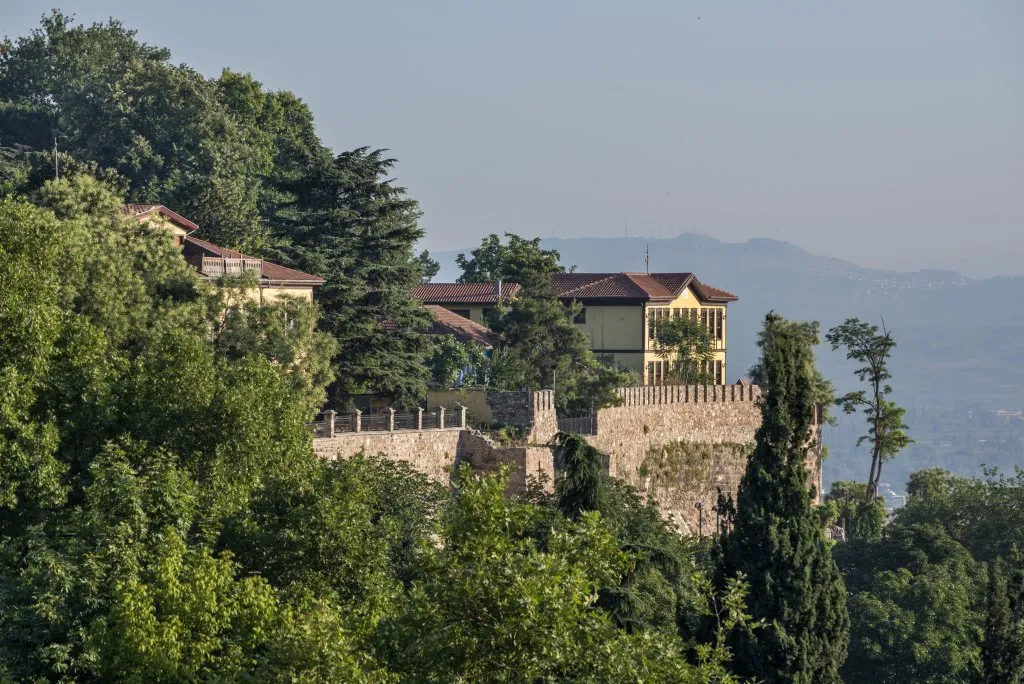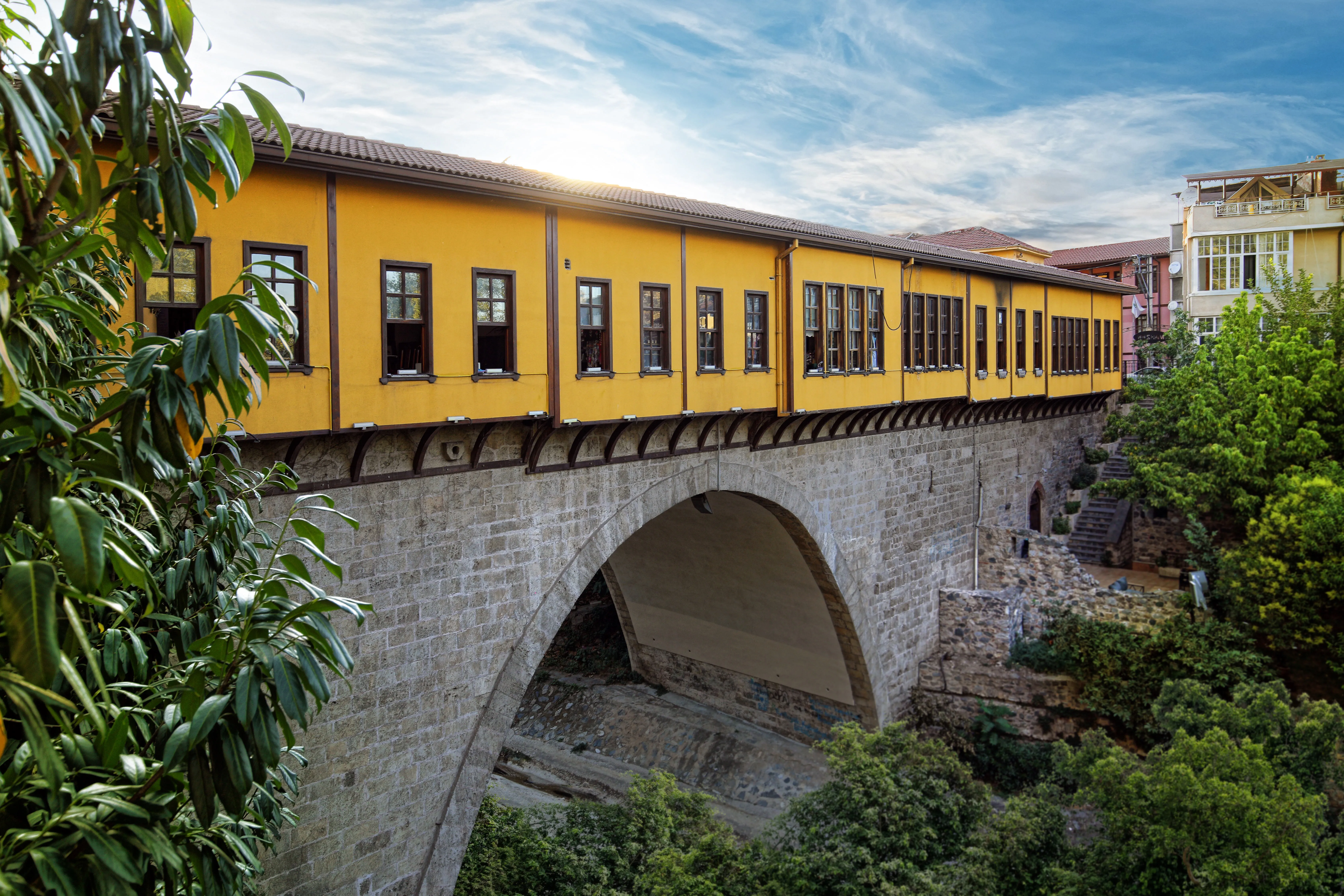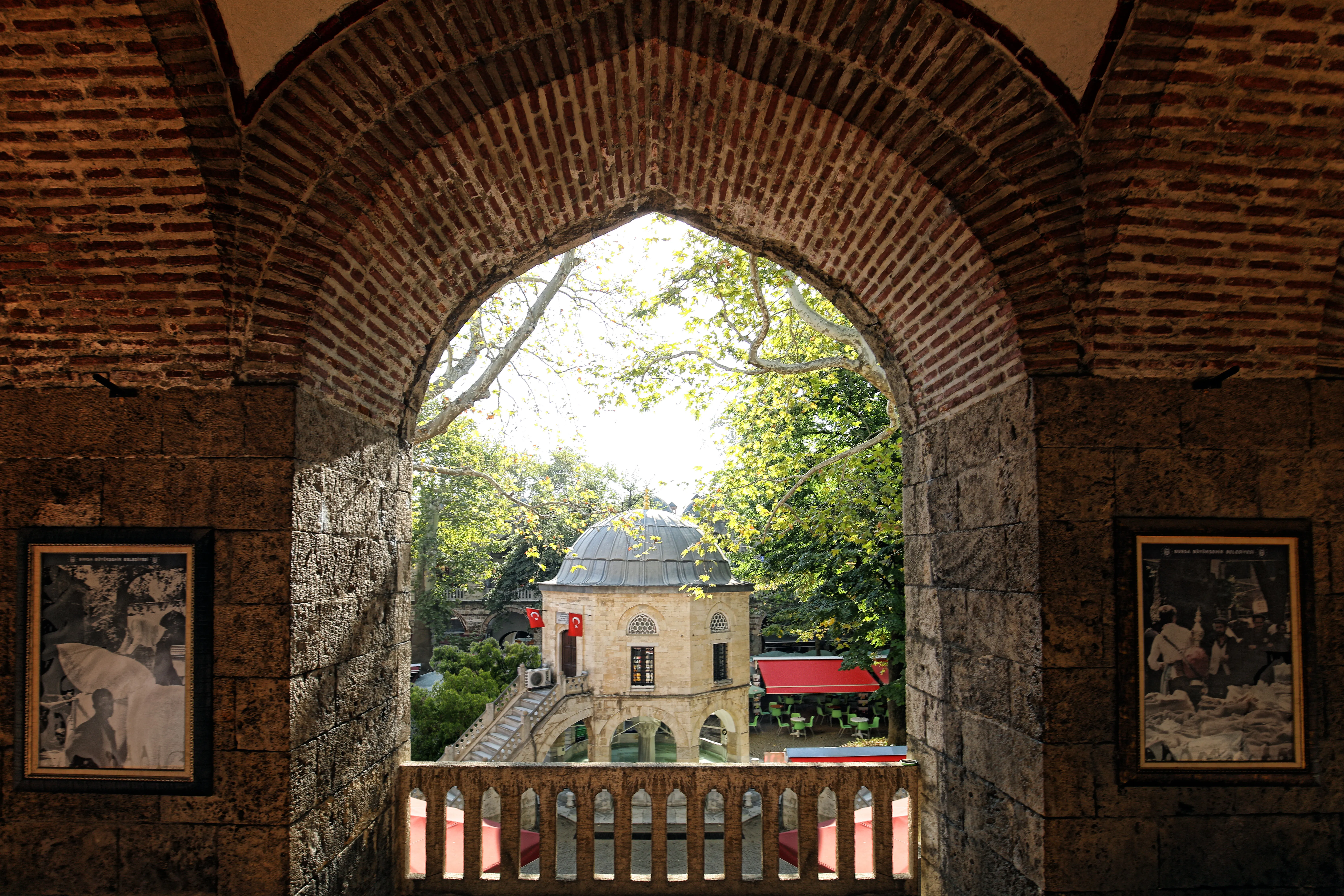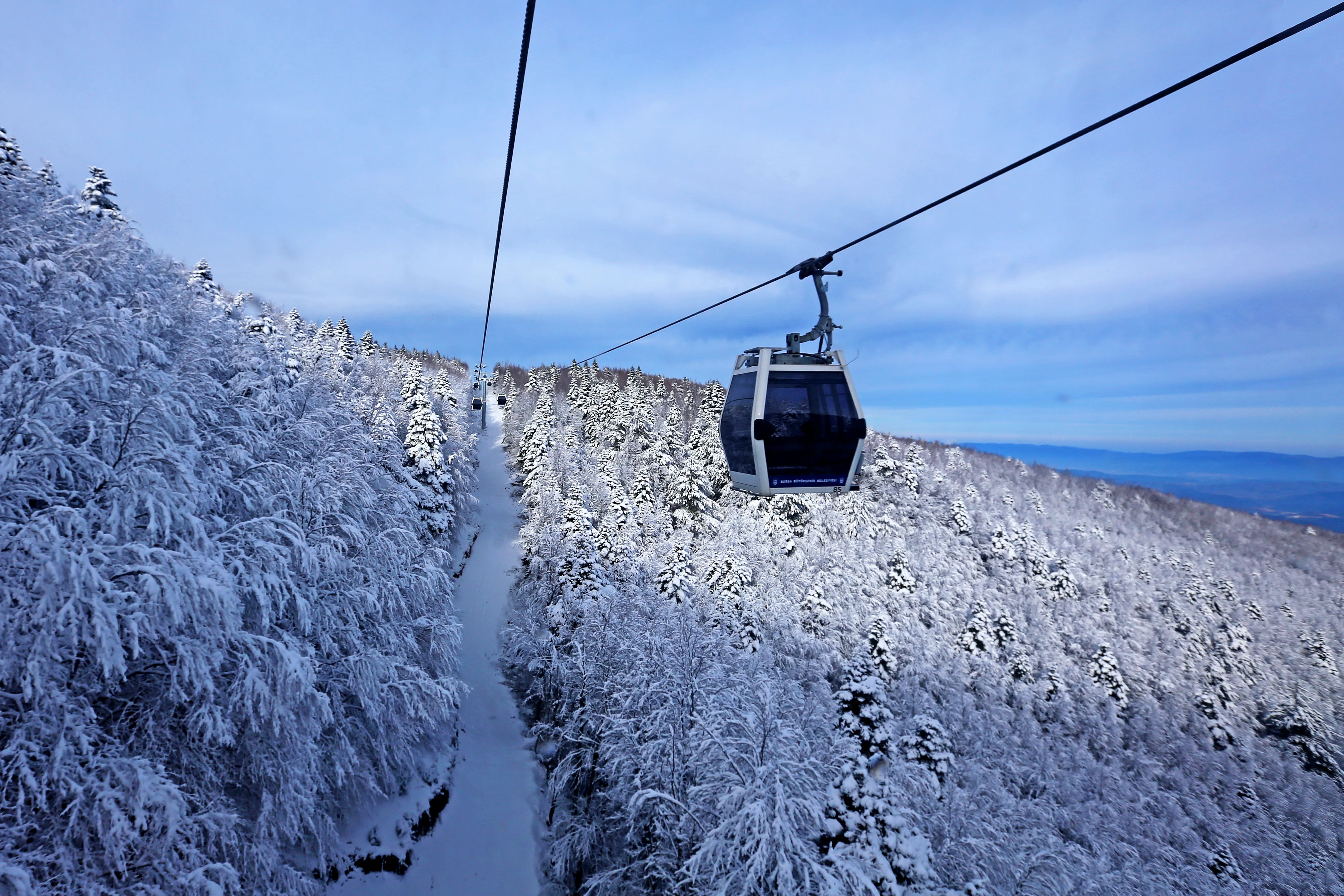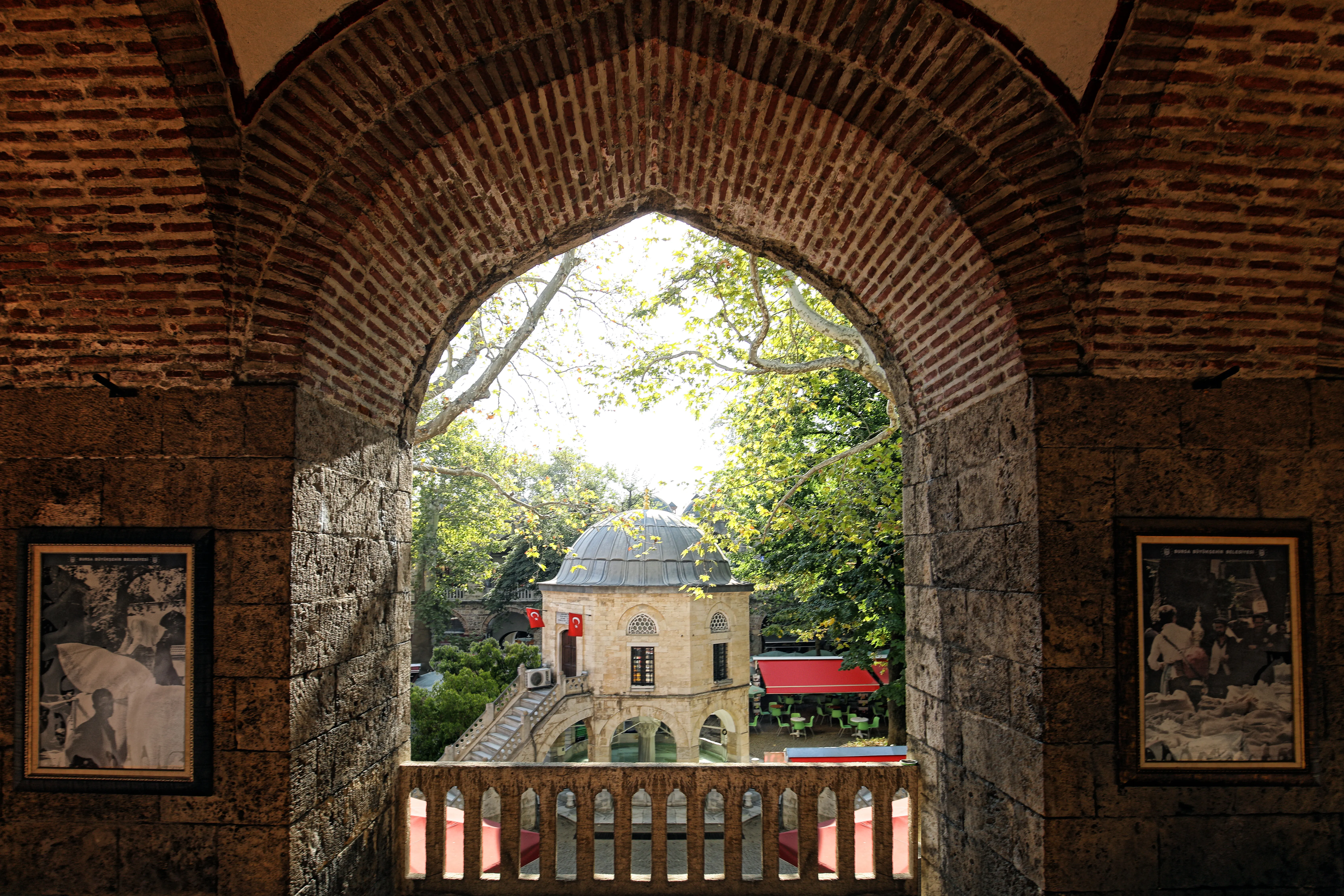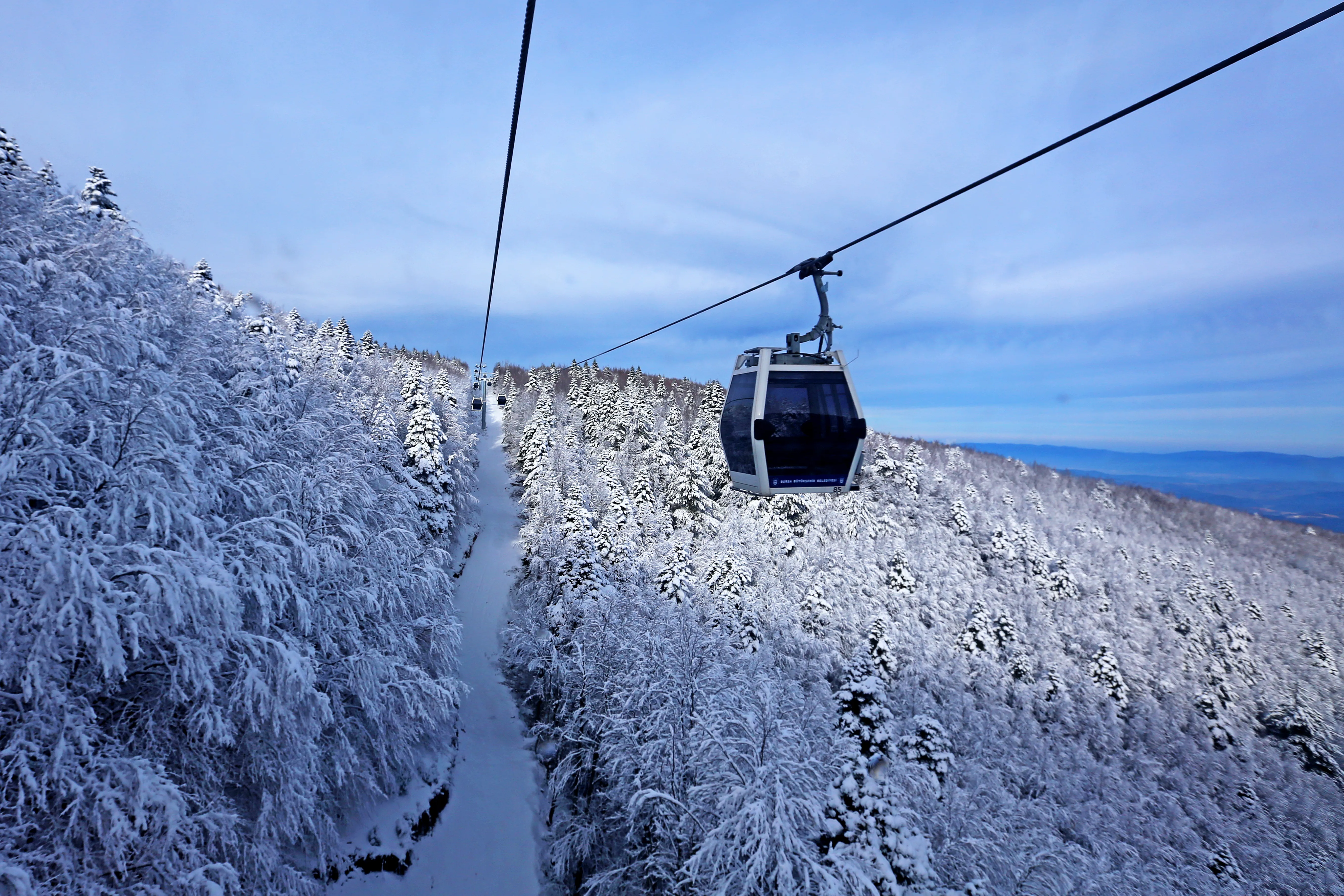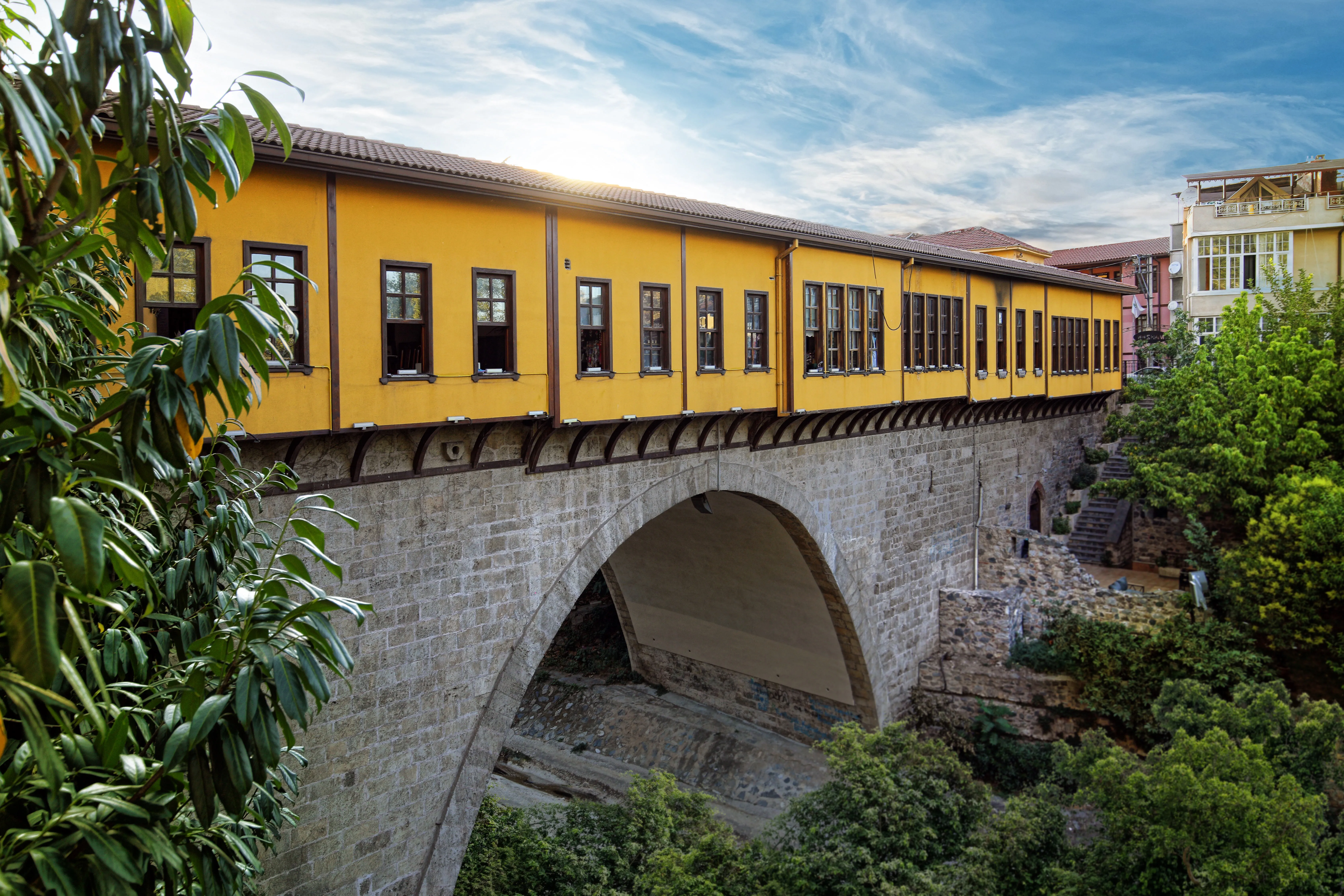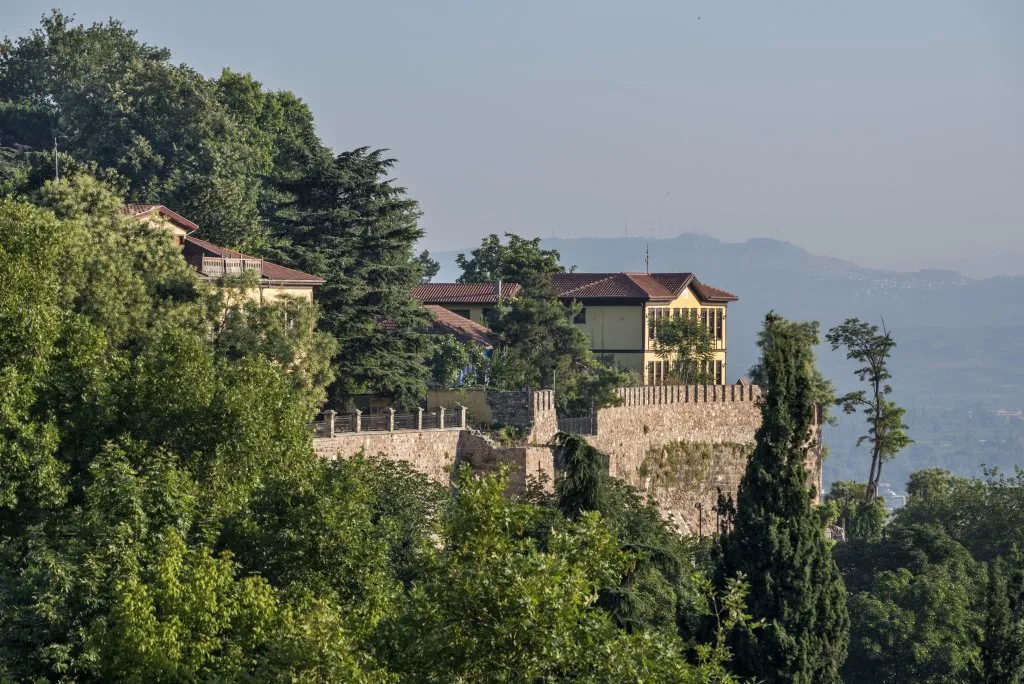
Don't Leave Without
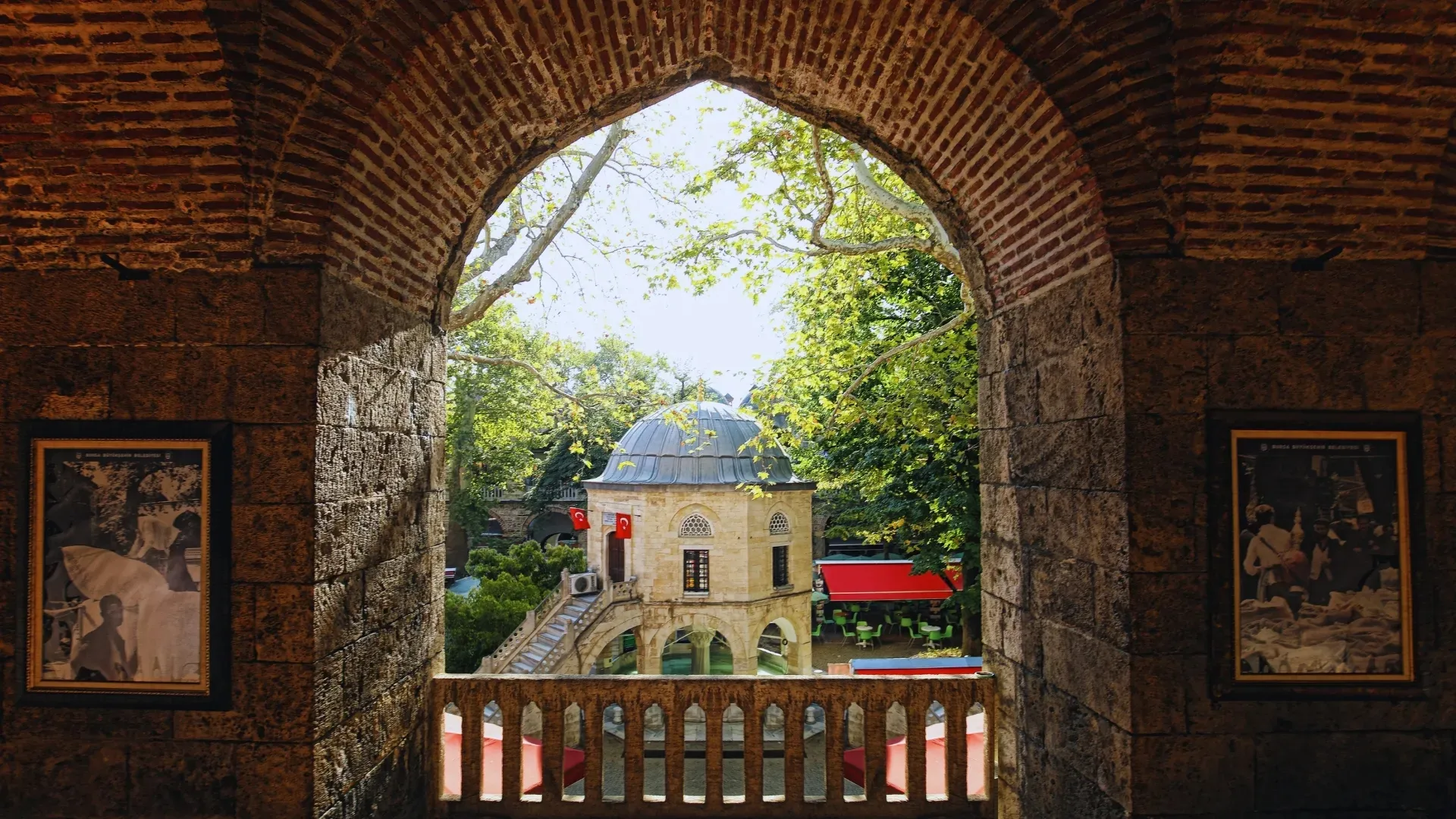
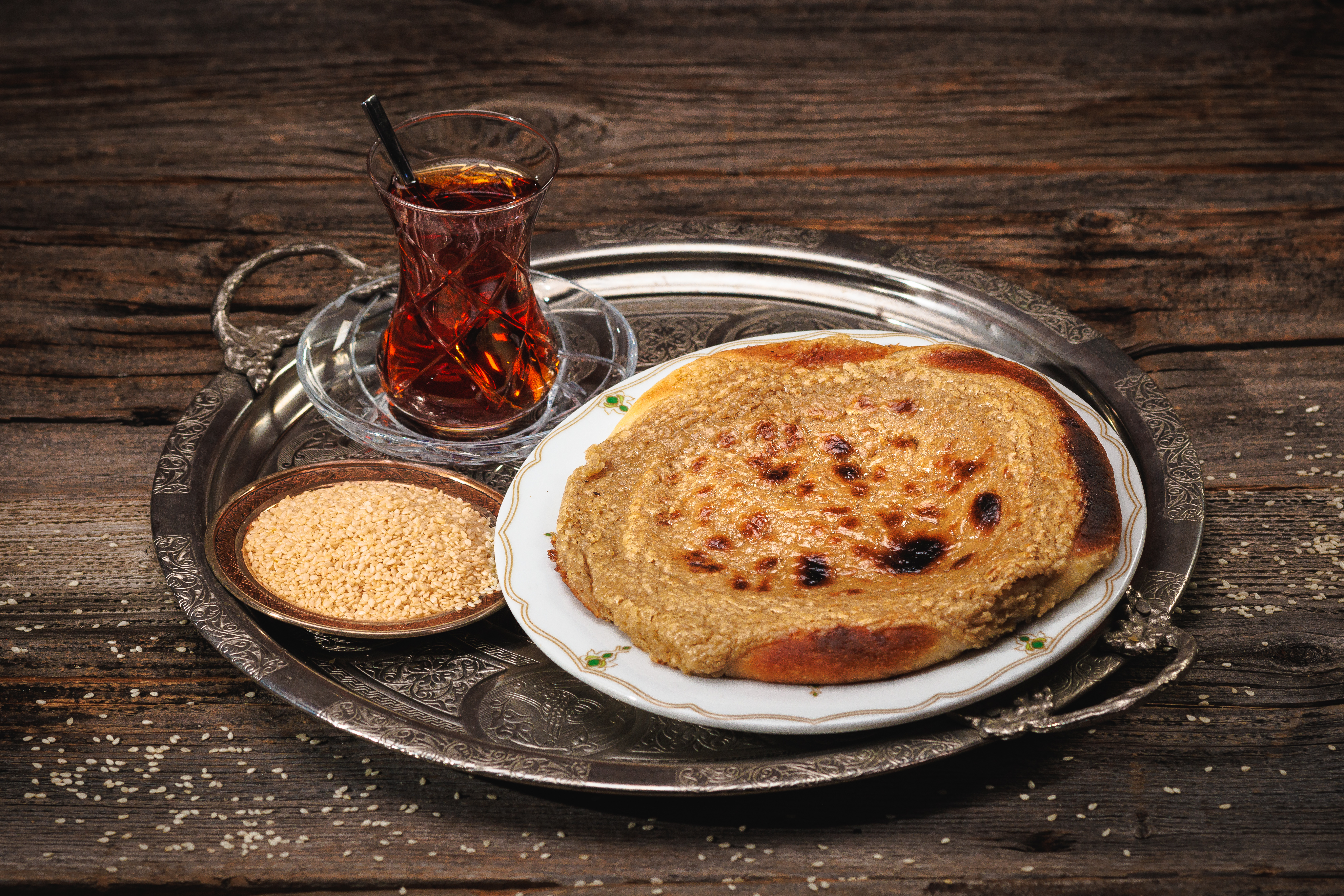
- Start your day with Tahini Pita
This pita, which is one of the local flavour of Bursa, was also included in the Ottoman cuisine. This taste, which has a history of 100 years, is indispensable for breakfasts in Bursa.
This flavour is prepared by pouring molasse with tahini and a small amount of sugar on the yeast dough. Then it is cooked in stone ovens and made ready for service. There are many pita ovens in Bursa that produce tahini pita bread.
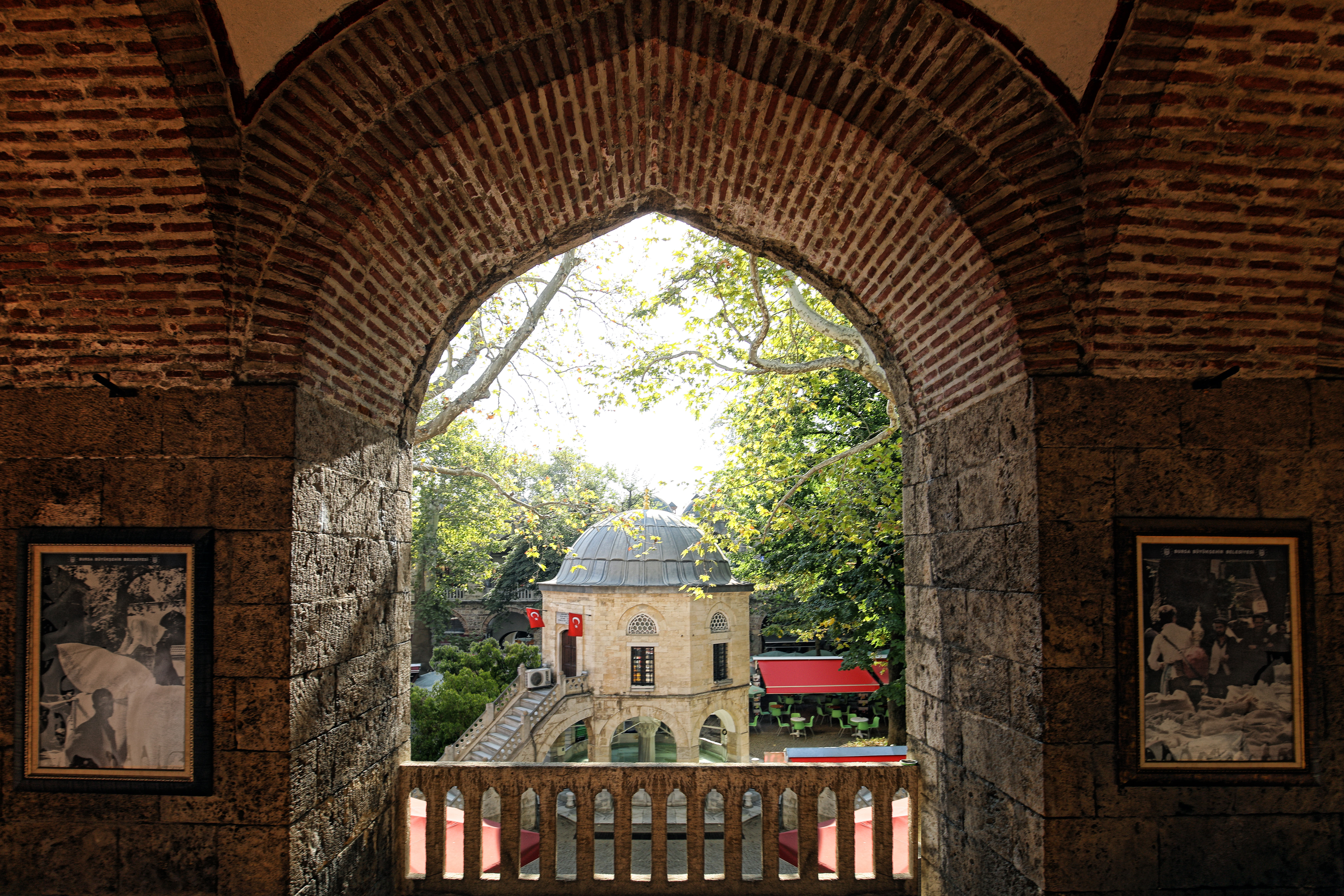
- Visit Silk Bazaar and Drink Turkish Coffee
In the Historical Silk Bazaar, which has been a trade and shopping center since the 15th century, you can sip your coffee in the embers or dine at many cafes located side by side in a historical atmosphere, under century-old trees, after shopping for silk.
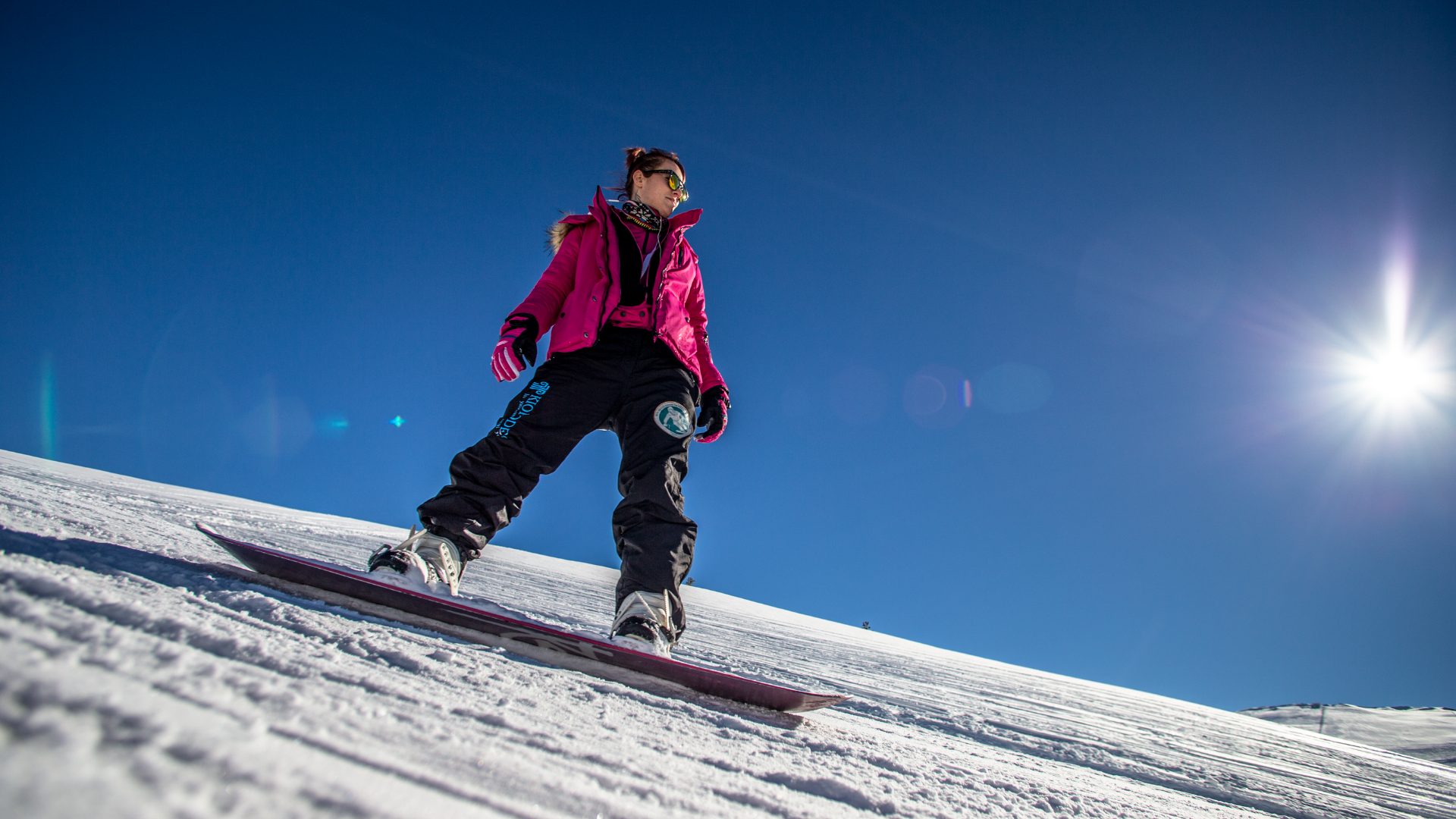
- Ski in Uludağ
Uludağ ,which is winter tourism attraction center in Turkey, has available more than 20 ski slopes in 1. and 2. hotels regions in lengths ranging from 500 m to 3000 m, The difficulty level of the slopes ,that can be reached from the starting point with beautiful and modern ski lifts, varies from easy to medium and difficult. If you wish, you can go to Uludağ completely unprepared and get snow suits and ski and snowboard gear from the ski rooms and enjoy skiing all day long.
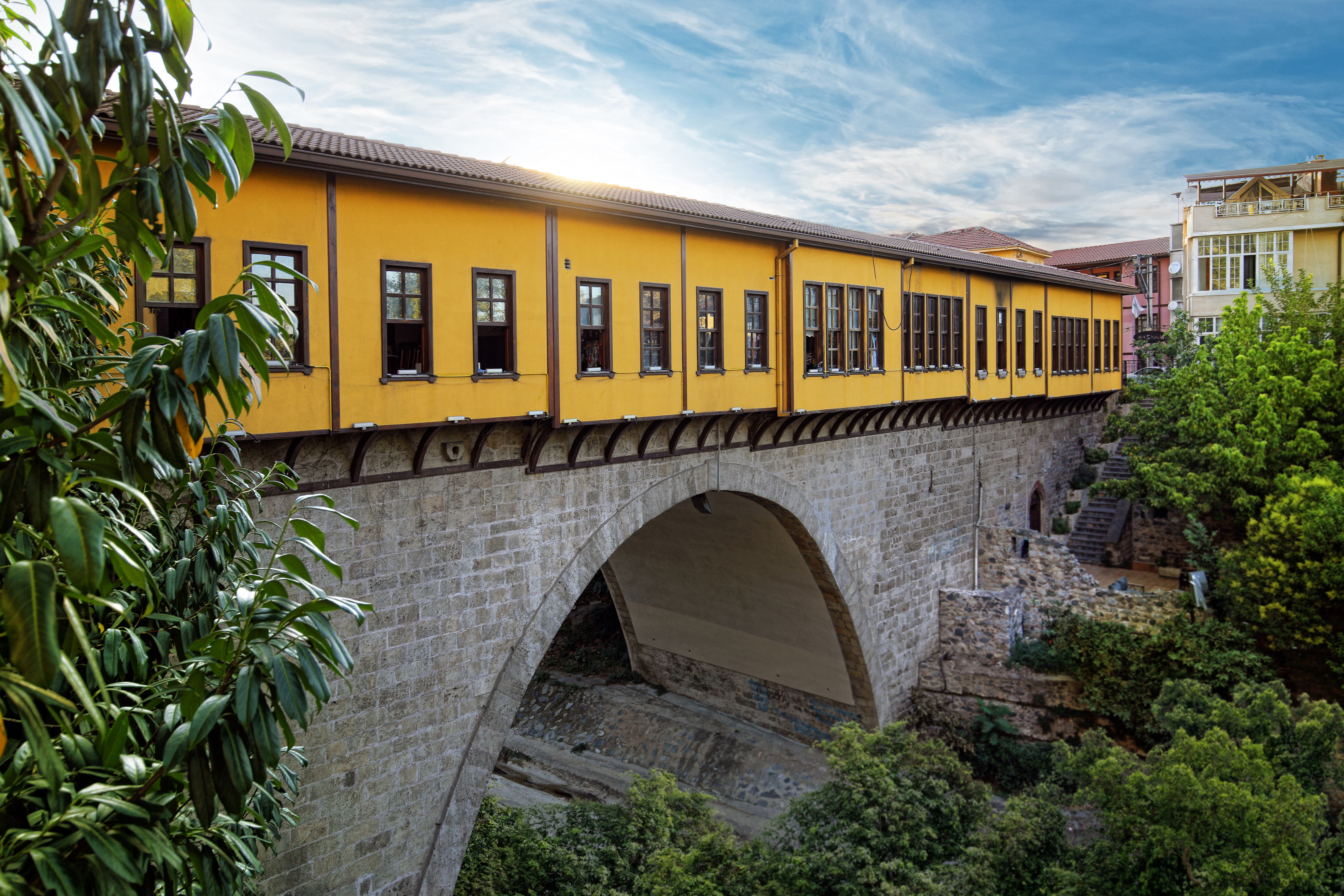
- Tour the Bridge with Bazaar
Visit the bazaar on Irgandı Bridge, one of the 4 bridges with bazaars in the world.
It is the third bridge from top to bottom, which is located on Gökdere and connects the city center to the east. It is known that the bridge was made of masonry in the first period it was built, with 16 sections on each side, a total of 31 shops, 1 masjid, and warehouse and barn sections at its feet.
Today, the main structure of the bridge consists of an arch with a span of 16 meters and a width of 11 meters, and there are interior spaces covered with vaults on both sides of the arch.
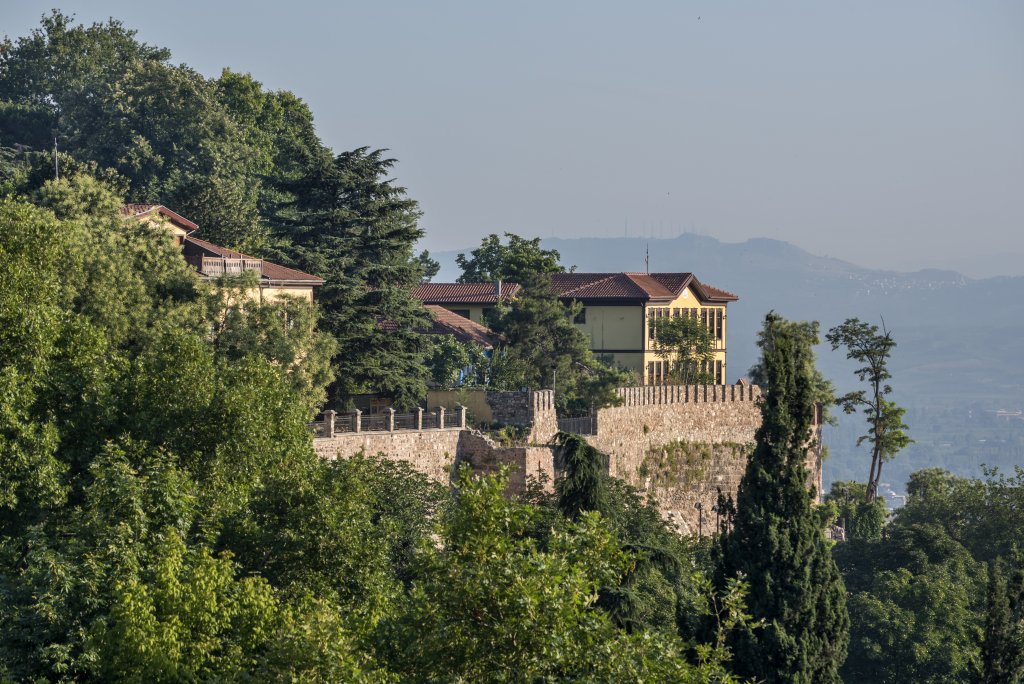
- Take a walk in Bursa Fortress
Walk through the authentic streets of Bursa Castle that preserve its authenticity.
Bursa, with its 3400 m long walls and Castle Gates defying the years, is a member city of “Walled Cities Union”. Evliya Çelebi mentions in his travel book that he toured the walls with ten thousand steps. Bursa Castle, built as a living space by the Emperor of Bithynia, Prusias, begins to live its golden age when Orhan Gazi conquered Bursa and declared it as the capital. You will walk around the inner wall, where many buildings have been built for centuries, and travel through history.
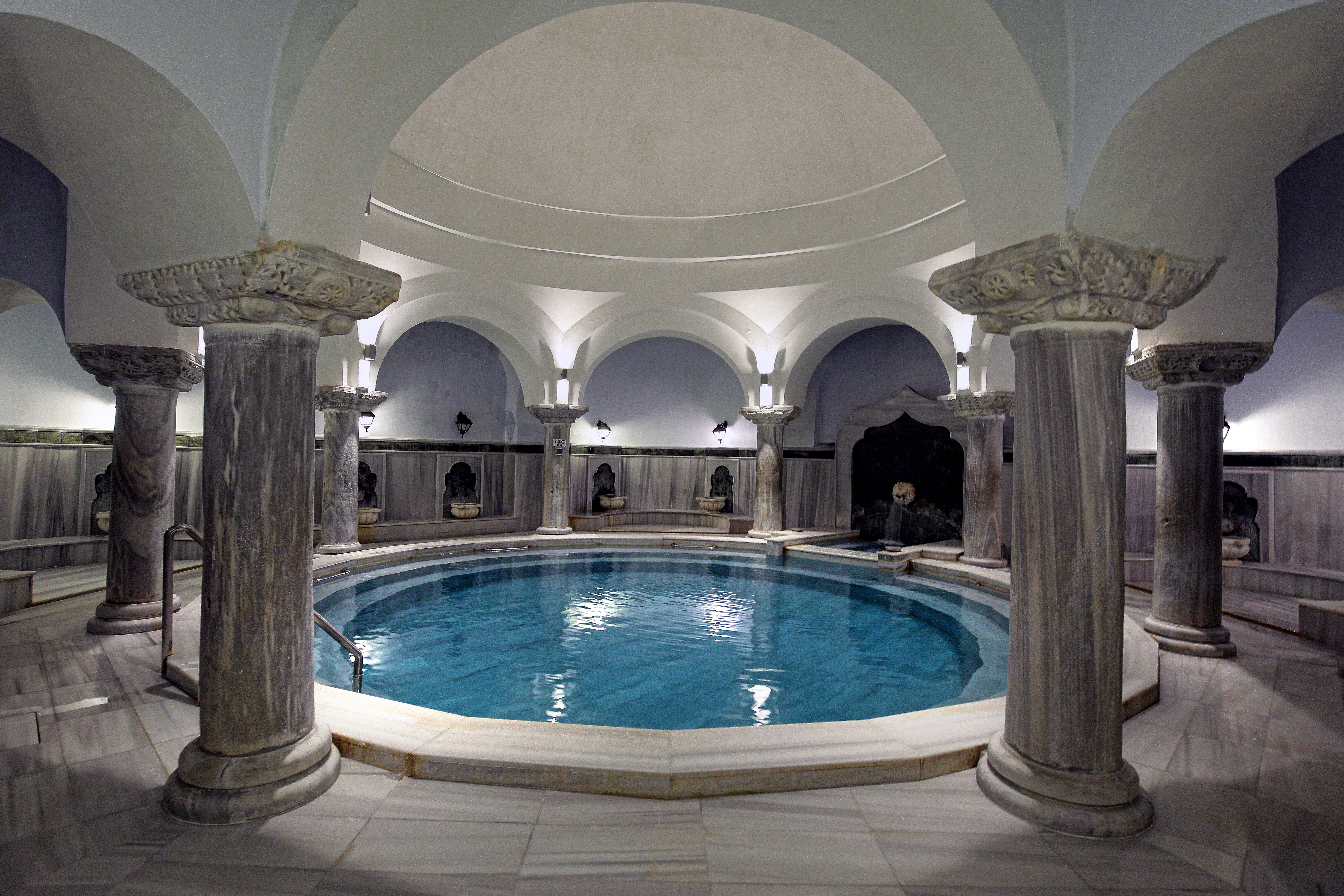
- Healing at an Ancient Hot Thermal Spring
After bathing in an old hot thermal spring, refreshing your body and soul with a massage and scrub, cool off with soda and ayran in the courtyard.
Our city is a center of history and civilizations as well as a city of healing with its thermal treasures. Dozens of historical baths and thermal springs from the three great civilizations, Rome, Byzantine and Ottoman, continue to heal today. Many of these are famous spas that have been used since Roman times and served emperors and sultans. The healing waters of Bursa are boiled from Çekirge district on the foothills of Uludağ, which is mentioned as Olympos in mythological records. When the great Turkish traveler Evliya Çelebi visited Bursa; He gives the following judgment about Bursa; '' In Sum, Bursa is consisted of water. Every eye that sees gives the right to Bursa. Bursa is a healing land with its streams, waterfalls and thermal springs. '' Rheumatism and neuralgia are the leading diseases treated with Bursa thermal waters.
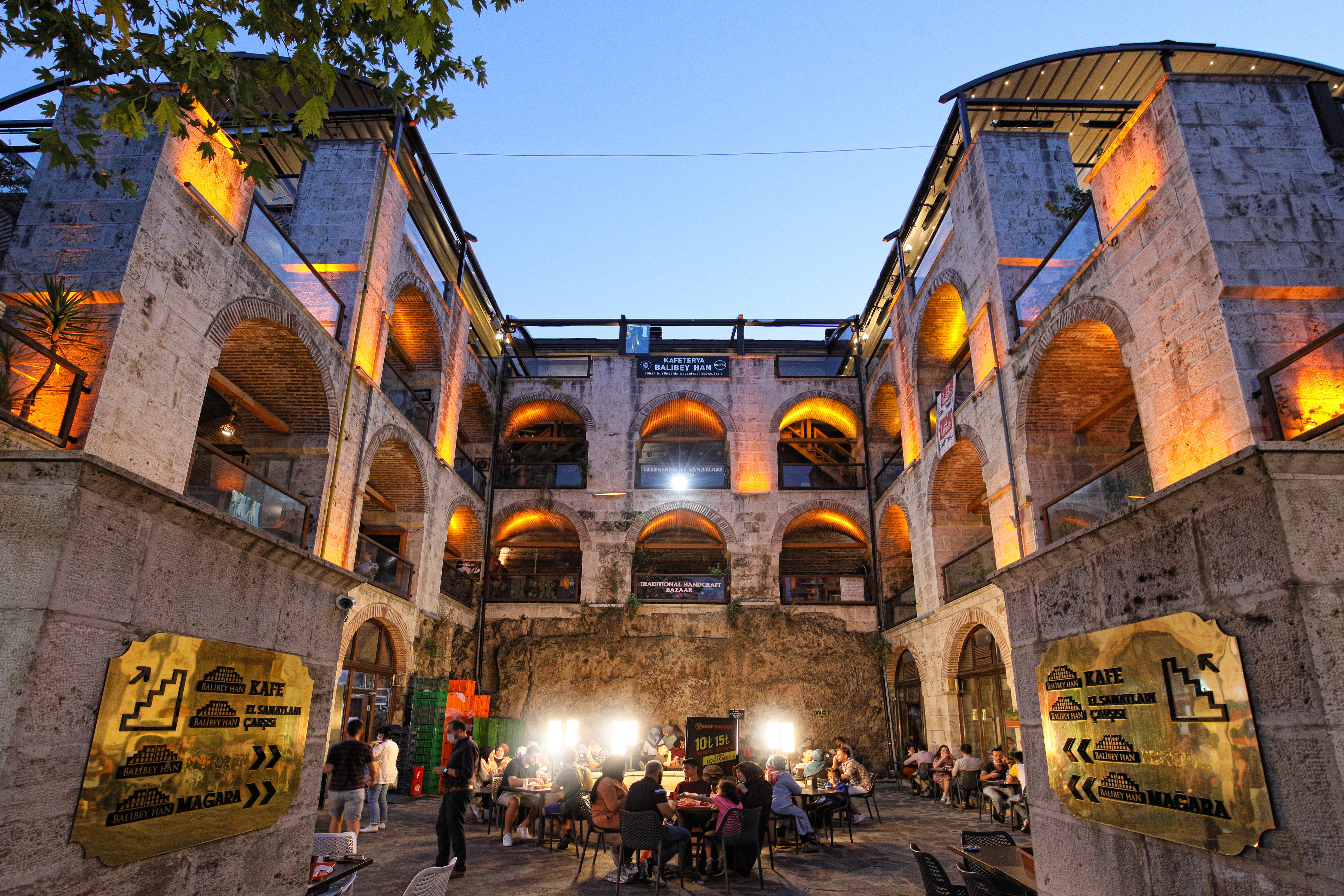
- Visit the Craftsmen in Balibey Khan
Stop by Balibey Han, the first 3-storey Khan of the Ottoman Empire, and watch the workshops of local artists.
It is located in the westernmost part of the Historical Bazaar and Khans Area, where trade structures are concentrated. Built on an area that slopes to the northeast, the building has two floors to the east and three storeys to the west. It is the only Khan built with three floors among the khans in Bursa.
.jpg)
- See Ulucami's Unique Arts of Calligraphy
See Ulucami's pulpit with unique calligraphy works adorning its walls.
Ulucami has been the largest example of the multi-domed mosque form in Ottoman architecture. 129 calligraphy writings, some of which belong to famous calligraphers such as Abdülfettah Efendi, Kazasker Mustafa İzzet Efendi, Sami Efendi, Şefik Efendi, within the mosque are shown as original examples of the art of calligraphy. Examples of Esmâü'l-Hüsnâ are written with celî thuluth and kufî lines on every face of elephant feet. Also in the mosque, There is also a plate belonging to Sultan II. Mahmud.
In the kundekari technique of the mosque, the pulpit, which consists of interlocking parts without using nails or any other binders, is a work of art and was made by Hacı Muhammed bin Abdulaziz bin İbnü'd-Devâkî. The solar system is depicted on the east side of the pulpit and the Milky Way galaxy on the west side. In addition, in the inscription on the door of the pulpit, it is stated that the mosque was completed in H.802 (1399) by the order of Yıldırım Bayezid.
- Shop at the Historical Bazaar
Get lost in the allure of smells, flavors, colors, patterns and textures as you stroll through the Historic Bazaar in the Khans Area, which is included in the UNESCO World Heritage List
The first Ottoman capital of Bursa is one of the major trading centers of Ottoman Empire and the Republic of Turkey
This important commercial role of Bursa and being the capital of the Ottoman Empire was reflected in the Khans Area as large khans, covered bazaar and bazaars. This region has been the center of economic activity in the city since its establishment in the 14th century. The area has preserved its aesthetic and social value and, as it is completely pedestrianized, it is an attractive public space for both tourists and city dwellers. Khans and bazaars have been operating uninterruptedly since 700 years.
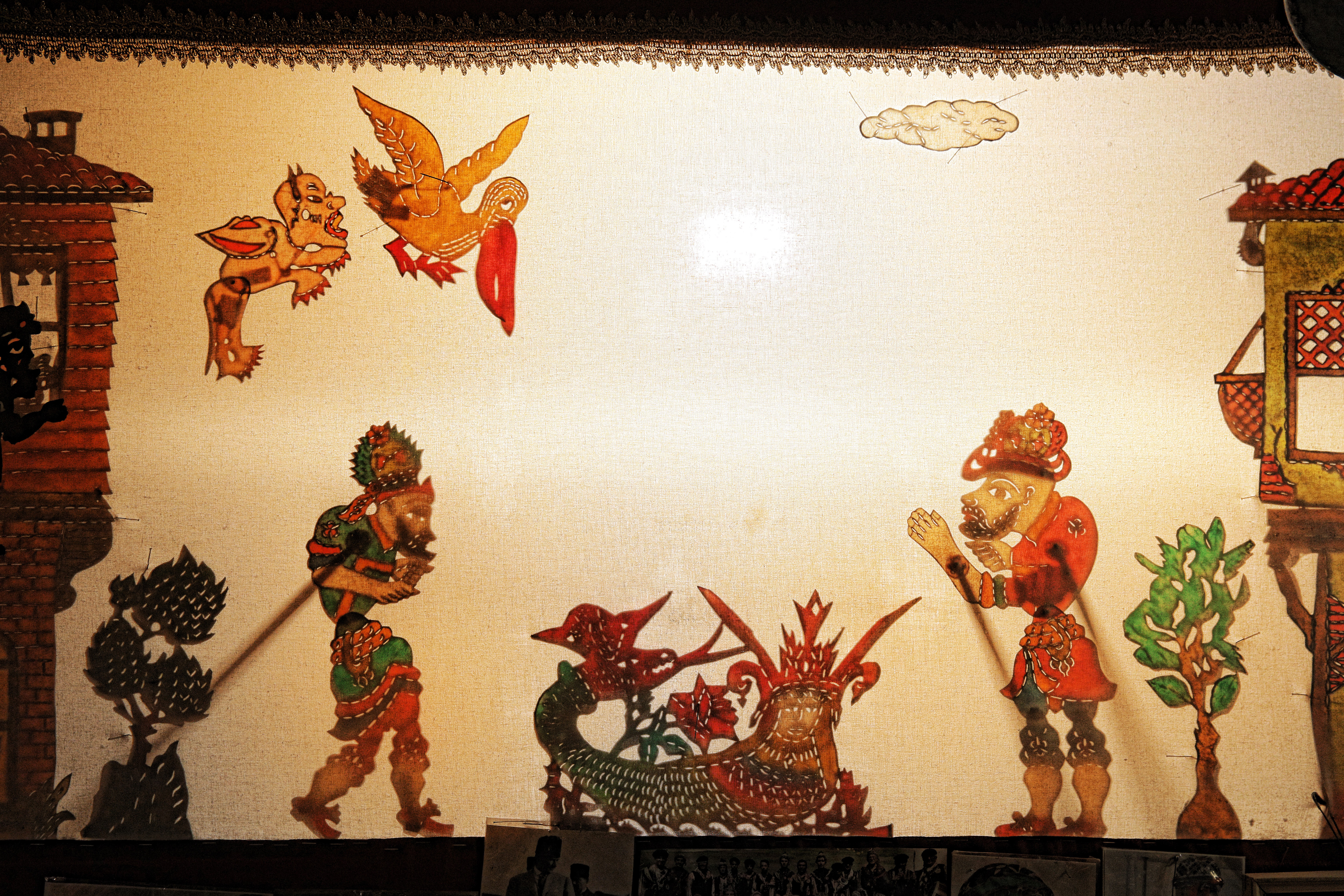
- Watch a Show at the Museum of Karagöz,
Watch a show at the museum of Karagöz, which is on UNESCO's Intangible Cultural Heritage List.
In 2007, it converted into a museum by the Bursa Metropolitan Municipality, Turkey's first and only Karagoz Museum has two galleries. In the first gallery, the history of Karagöz, the Turkish shadow play, is explained on information boards. In the second gallery, traditional Karagöz play depictions are exhibited. In addition, this heritage continues to be kept alive in our museum to carry it into the future with shadow play shows held in the museum.
Tel: 0 224 716 37 61
https://www.bursamuze.com/
It is open every day of the week, except Mondays, between 09:30 and 17:30.
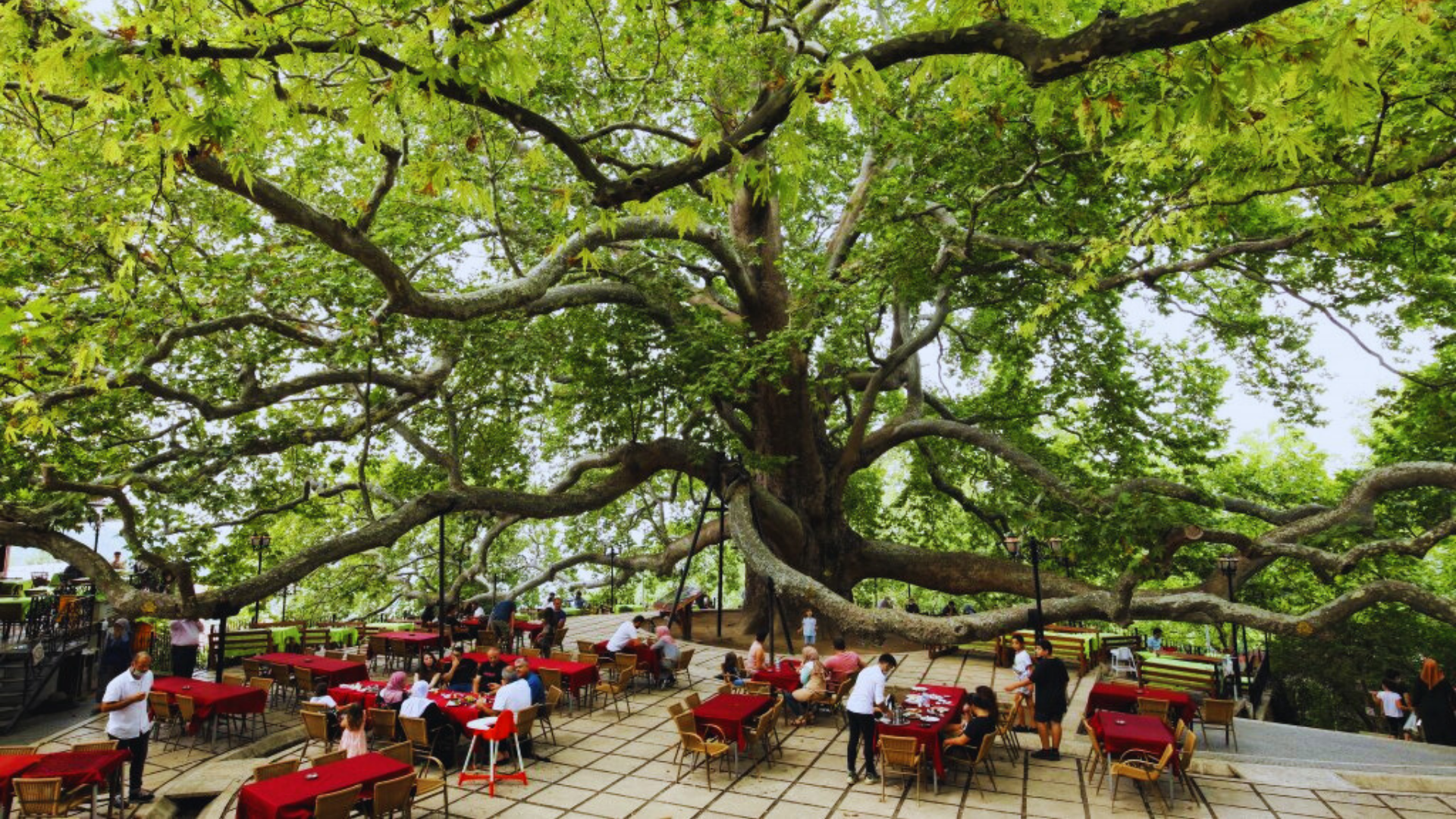
- Drink Tea Under the Largest Tree of Turkey
Drink tea under the arms of the 620-year-old historical Inkaya Plane Tree, eat fresh fruits according to the season.
All around Bursa is full of Monumental Trees that defy centuries. The best known of these trees is the İnkaya (Ulu) Plane Tree, with its age of more than 600 years, in İnkaya Village, which is 4 km away from Çekirge district and on the Uludağ road. It is physically largest tree of Turkey. Diameter of the Plane Tree is 3 meters, 10 meters in circumference, height is 37 meters. It has 13 main branches, each the thickness of a tree trunk.
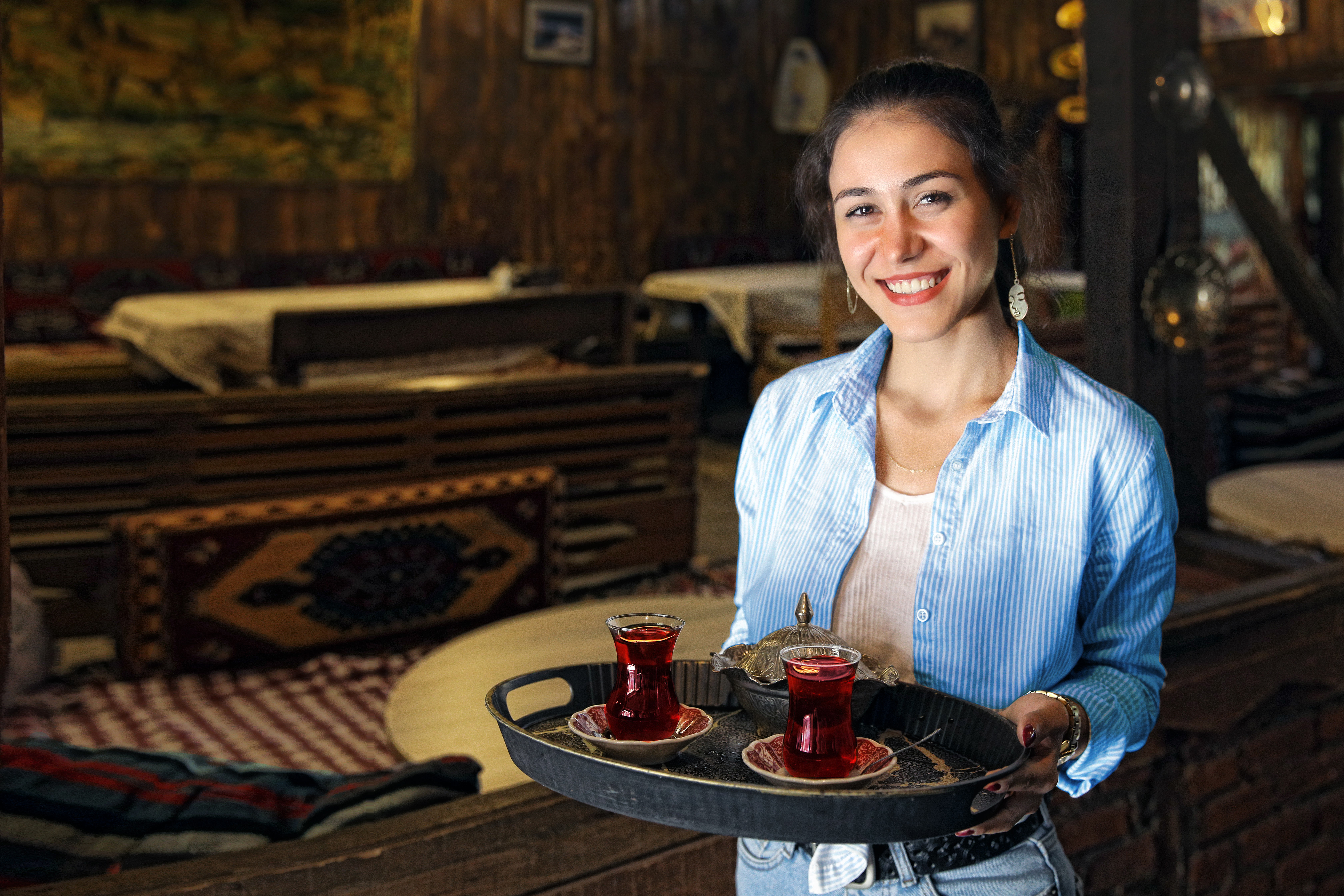
- Have a Village Breakfast
Enjoy a village breakfast in the 700-year-old Ottoman village, Cumalıkızık.
Historical mansions that have evolved into restaurants in Cumalıkızık, which has a history of 700 years; offer a wide range from a mixed breakfast enriched with organic jams made from the region's raspberries and blackberries to raspberry sherbet unique to the village, from pastries to meat dishes.

- Tour Gölyazı and Uluabat by Boat
Gölyazı, a unique beauty where nature and history are intertwined; It is an old Greek island town built on Uluabat Lake. Its historical name is Apollonia, and the name of the lake is Apolyont. Uluabat Lake, which is located on one of the important bird migration routes extending from Europe to Asia, hosts many storks every year. The most important activity on the lake is 4 seasons boat trips. Women living in Göyazı also go out fishing and the fish that are caught are sold at an auction in Gölyazı square. There are 11 islands of different sizes in the lake, which is also called Apolyont Lake.
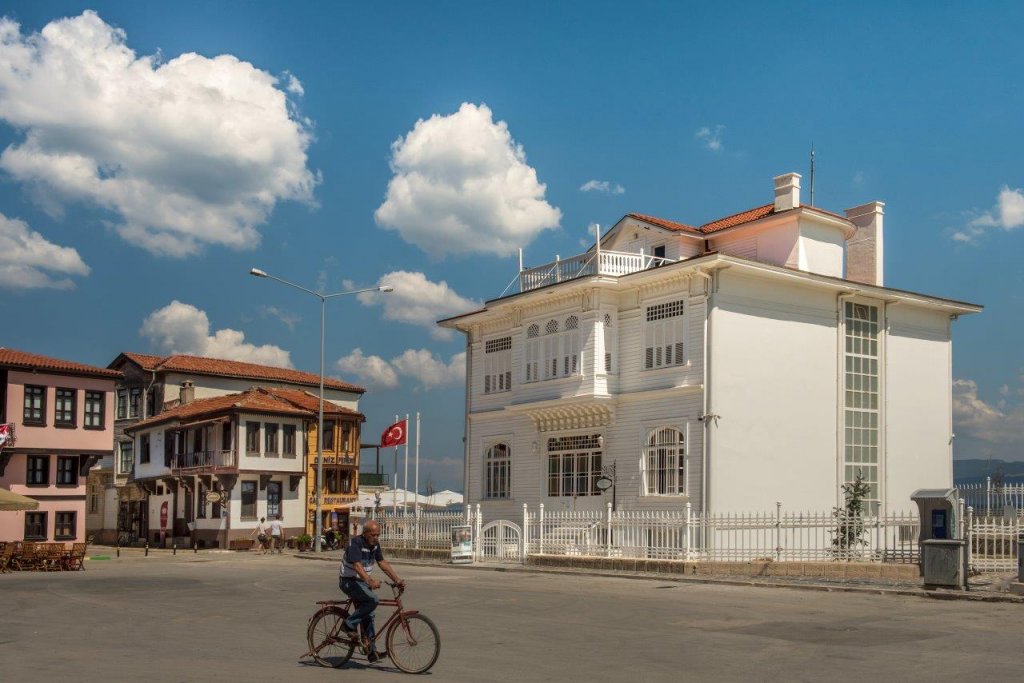
- Walk Through The Historical Streets of Mudanya
You can see the Mudanya houses, which are the most beautiful examples of civil architecture, by wandering among the historical streets of Mudanya. Enjoy Turkish coffee in authentic cafes on these streets in Mudanya, which has preserved its historical texture in an original way.
In addition, you can taste the freshest fish of the season, fish soup and after-dinner tahini halva in the fish restaurants lined side by side in Güzelyalı or Mudanya center.
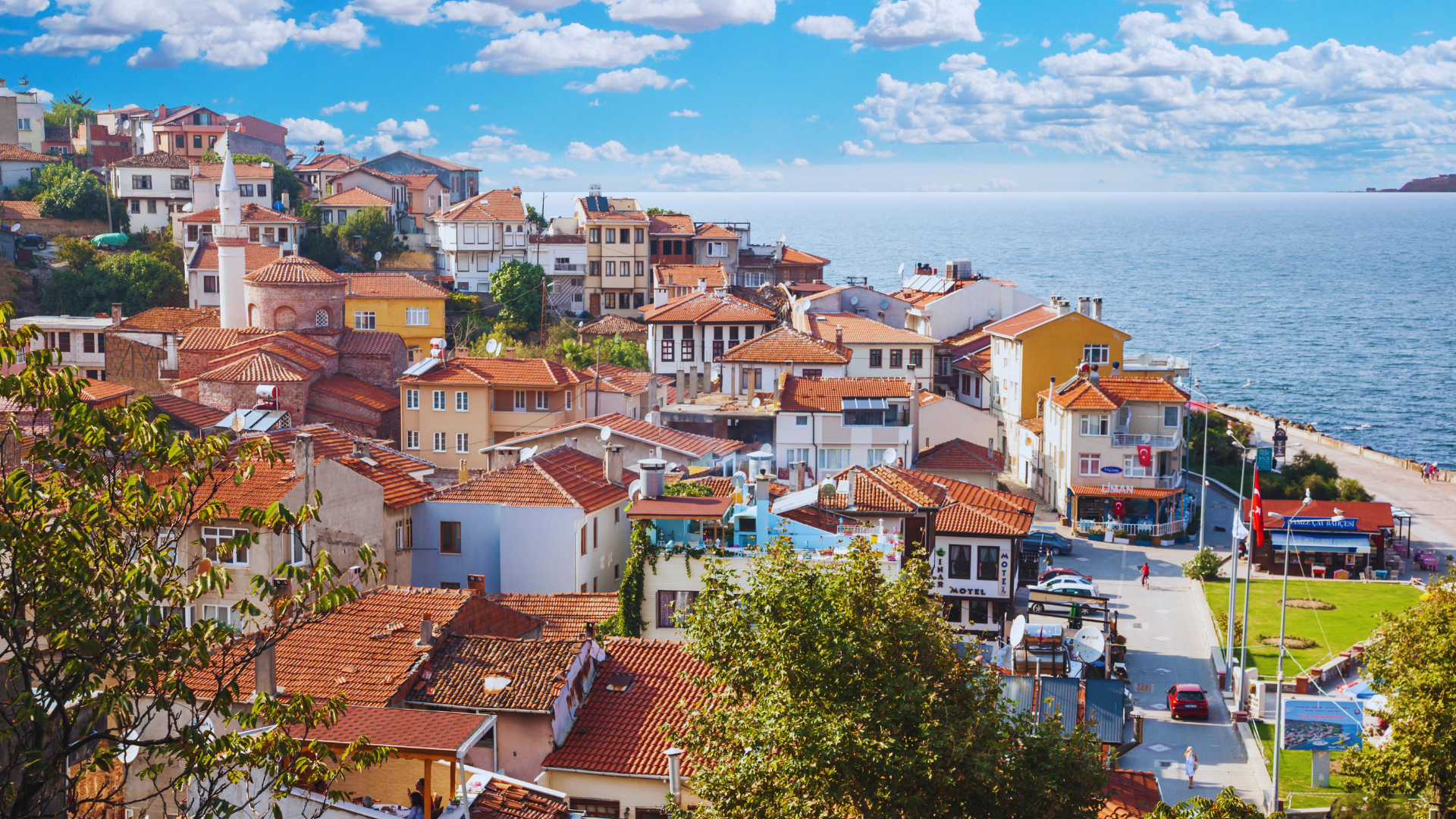
- Get Lost in the Historical Streets of Tirilye
Wander among historical houses in Tirilye and dine at a fish restaurant.
Tirilye, an old Greek fishing town, it is a virgin coastal town with its churches, houses that preserve its original architecture to a great extent, narrow streets and a harbor. Tirilye, one of the preserved corners of the Mudanya coast, is an old Greek town known for its fish and olives, and has been known for tourism in the recent period. It was once the most populous settlement in the region, and a hundred years ago olives and olive oil were exported to Europe from here.
In the restaurants lined up along the Cordon (Long Walking Pevement), appetizers made by Cretan immigrants and olive oil dishes in addition to fresh fish will make you feel the privilege of eating fish in Tirilye. You can also taste the delicious olives and olive oil of Tiriye in Tirilye's Bazaar.
The historical Çamlı Kahve, which is the highest point of Tirilye, was the place where Greek women were waiting for their wives who went fishing. When the weather is clear, you can observe the unique view of the bay from this point and the Armutlu beaches on the opposite side.

- Take the Cable Car to Uludağ
Bursa, the first cable car in Turkey; It provides fast, comfortable and safe travel to Uludağ Sarıalan and Hotels Region with a total of 144 cabins and one cabin in 20 seconds.
Uludağ, with its ancient name Mount Olympos , will be unforgettable trip for you with the four seasons of the magnificent nature. At Sarıalan, which is the first of the arrival stops of the Cable Car, you can do nature camp and trekking in the facilities in the forest, or you can enjoy barbecue in the restaurants. The last stop of the Cable Car is the Hotels Area and the Ski Center. If you take the cable car here in winter, you can ski and enjoy sausage bread in the snow.
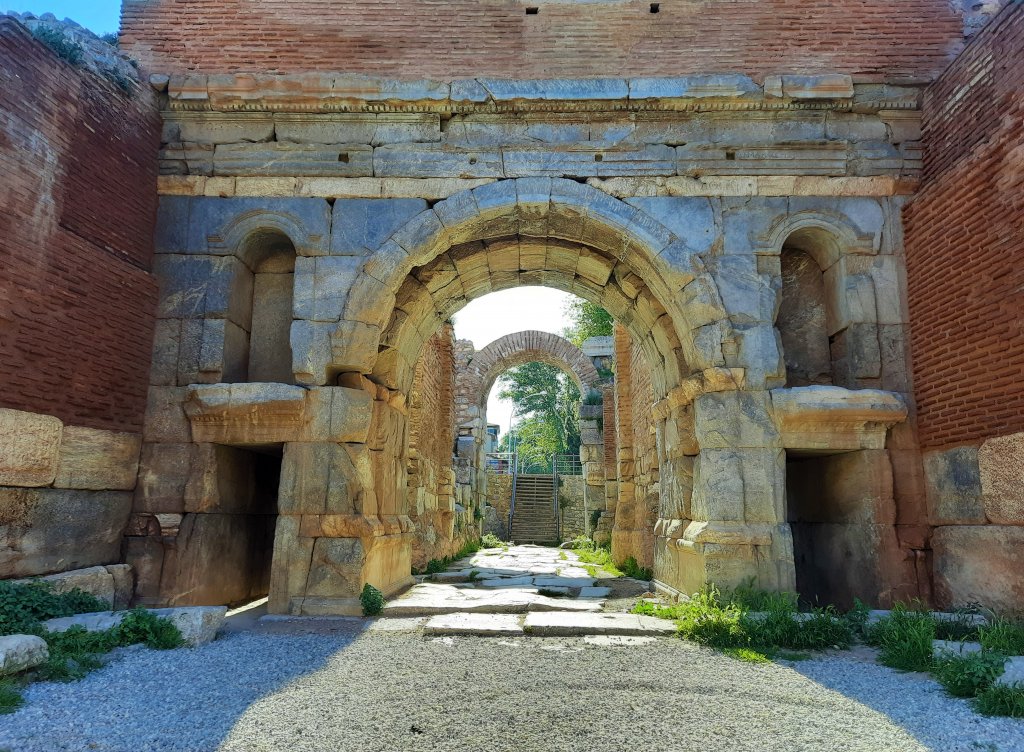
- Visit İznik, the Capital of Civilizations
İznik, which has been the capital of 4 different civilizations, is a UNESCO World Heritage candidate list and is an attraction center where you will spend every moment of your visit with its history, nature and tile production. Also, İznik, one of the most important cities in the history of Christianity due to the meeting of the I. and VII. consul here, is at an altitude of about 200 meters among the olive groves.
.jpg)
- Watch How Unique İznik Tiles Are Made
Stop by a tile shop in İznik, the capital of civilizations.
İznik, district of Bursa, is a city that has been the capital of many civilizations. It is also the capital of tile. This magnificent art came to life in skillful hands and lived its golden period in the 14th and 15th centuries. The tiles used in the decoration of many mosques and palaces of the period further increased the splendor of these structures. Since it contains 80% quartz , that is, semi-precious stone minaret, it has entered the ceramics literature as "Ceramics Impossible to Manufacture". The craftsmen embroidered on tiles symbolizing the social life and beliefs of the period they lived with motifs.
The tiles, in which the symbols of peace and love are described with colors and motifs, constitute an important part of our historical and cultural heritage that has been transferred to the present day.

- Watch the Unique Sunset at İznik Coast
Watch the unique sunset by Iznik Lake while enjoying a coffee.
In the cafes and restaurants located around Lake Iznik, you can taste the fresh fish coming from Iznik Lake and watch the uniquely beautiful sunset with coffee and tea. Also, don't go without tasting the olives produced in Iznik and the various fruits and vegetables grown in the fertile lands of Iznik.
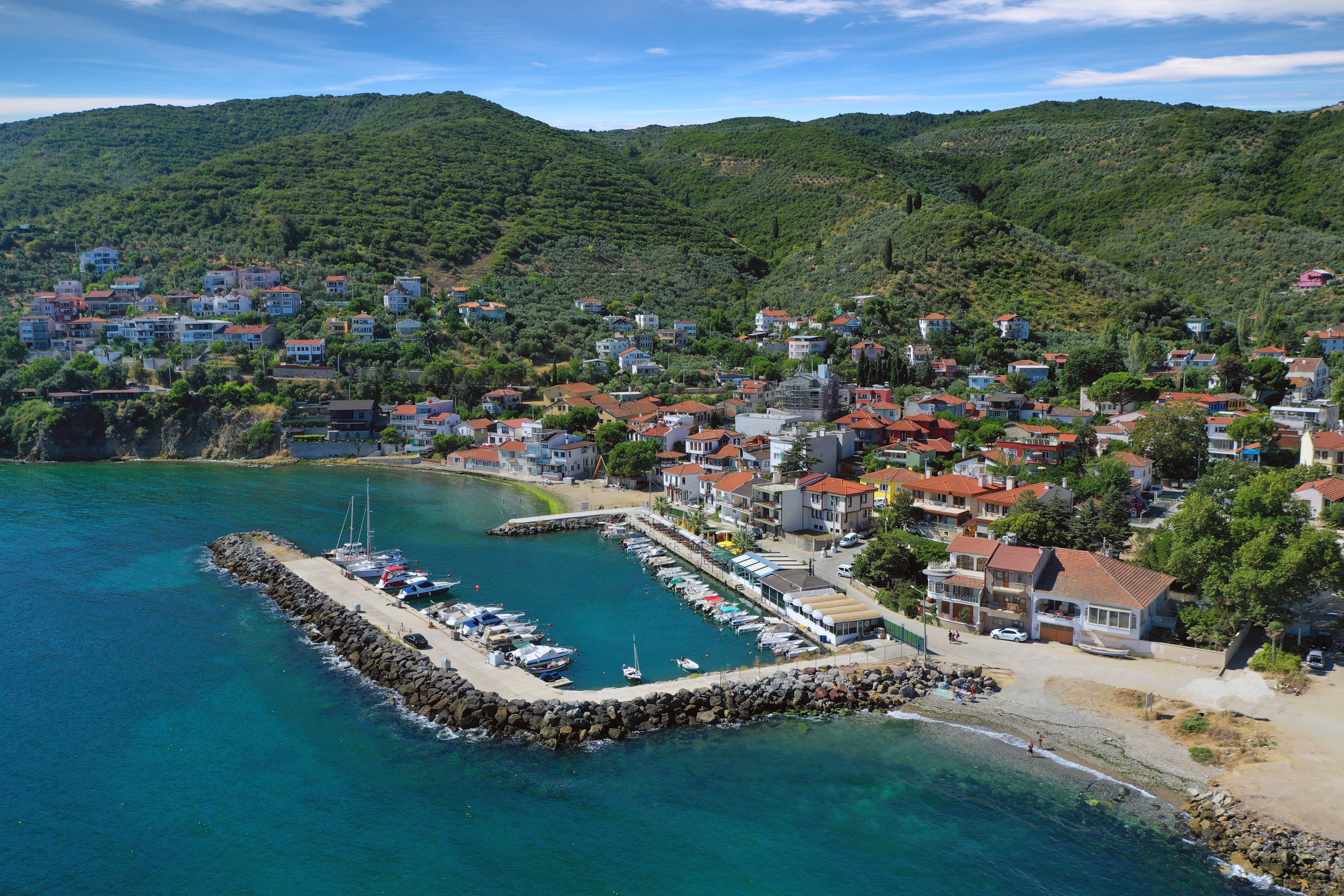
- Enjoy Coffee in Kumyaka
This historical neighborhood, which is home to the third oldest surviving church in the world, is one of the must-see places with its unspoiled natural beauty, deep blue sea and old Greek houses. You can see the gardens decorated with tangerine, orange and lemon trees only here in Bursa.
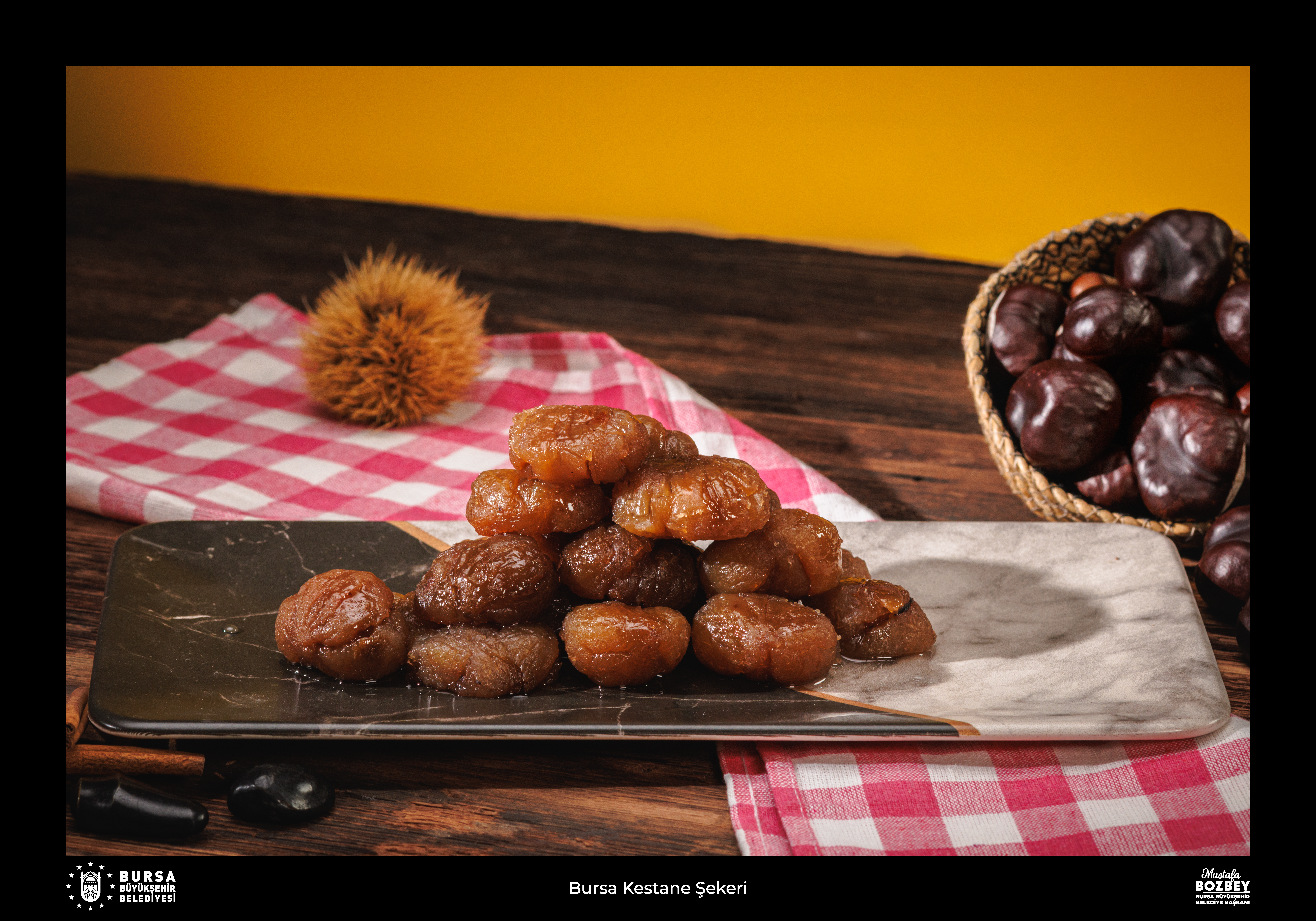
- Buy candied chestnut for your loved ones.
This dessert, made with chestnuts collected from Chestnut trees on the foothills of Uludağ, which is the symbol of Bursa, has been preserving its flavor and formula for many years. And also it is always remembered with Bursa.
The chestnuts used in making this dessert, which is one of the unique flavours of Bursa, are boiled and peeled and then put into a specially prepared syrup. It is ready for service after waiting for a day. You can also find this dessert at the patisseries in the center of Bursa.
Chestnut harvest begins every year as of the second week of September. During the harvest period, thousands of people collect chestnut from chestnut trees on the foothills of Uludağ. You can this dessert in famous and historical pastries of Bursa.
Bursa Candied Chestnut received geographical indication sign from Turkish Patent and Trademark Office.
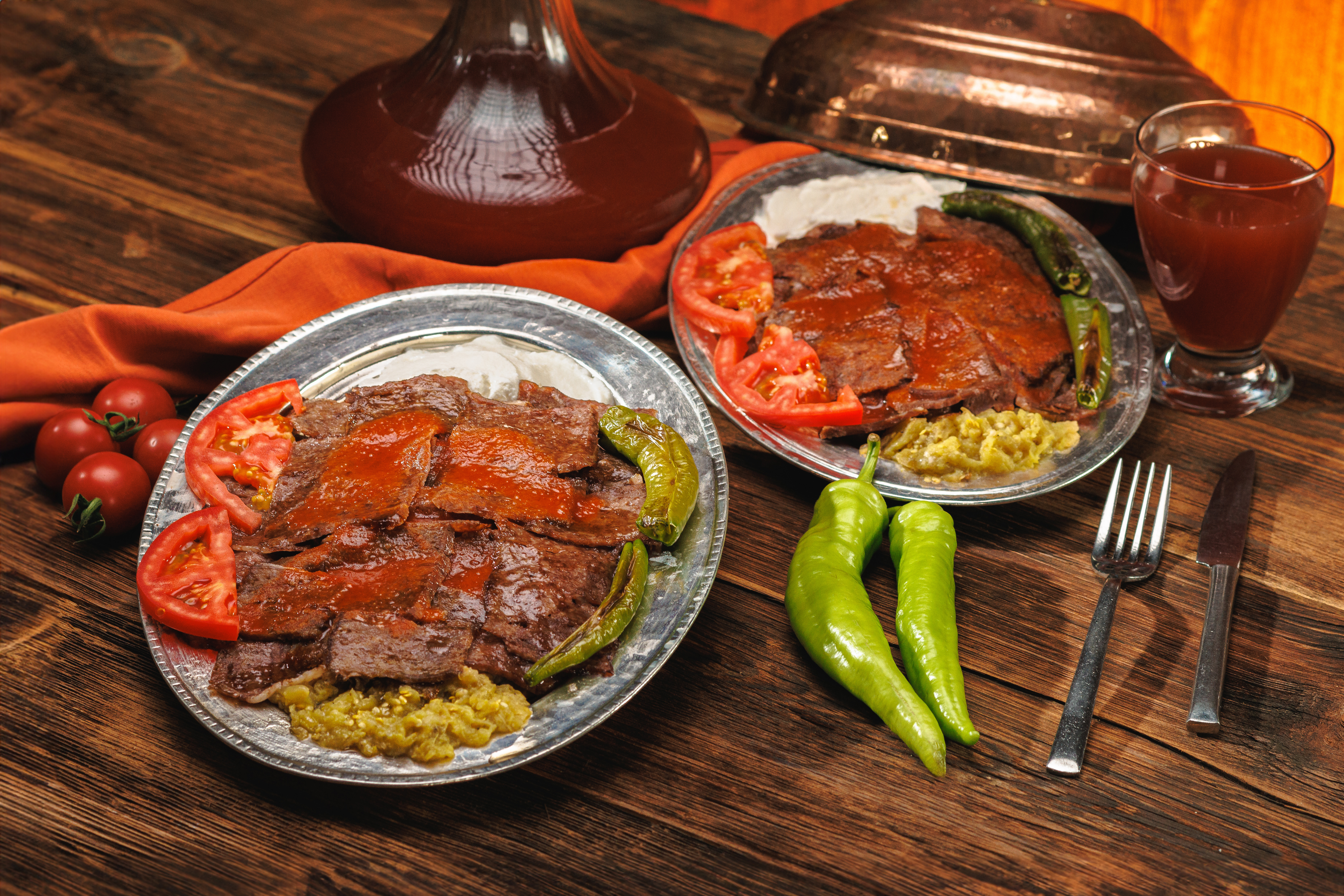
- Enjoy Bursa Doner Kebab
This flavour, which is one of the most special Products of Bursa with its deep-rooted history, special recipe, cooking style and unique presentation. According to historcal documents this kebab was firstly made in Kayhan Bazaar of Bursa, where Kebab shops are common. This food is one of the tastes that come to mind, when it comes to Bursa.
For this kebab, the meat of sheep and lambs, fed with herbs and thymes in Uludağ plateaus, are minced and bottles are passed. It is obtained vertically in the coal fire by turning around. After that, the fried meat is cut thinly with a knife and placed on the fried kebab pita on the plate prepared for serving. Finally, tomato sauce, butter is poured on it and it is served with yoğurt and roasted eggplant on the edge.

- Visit the Ottoman Sultan's Complexes
Visit The Complexes of founding Sultans of Ottoman Empire, which is on UNESCO World Heritage List.
Bursa,where the transition from the principality to the state and being the first capital city of the Ottoman Empire, also is the city where there are tombs of the first 6 sultans, known as the founding rulers among the 36 sultans of the empire.
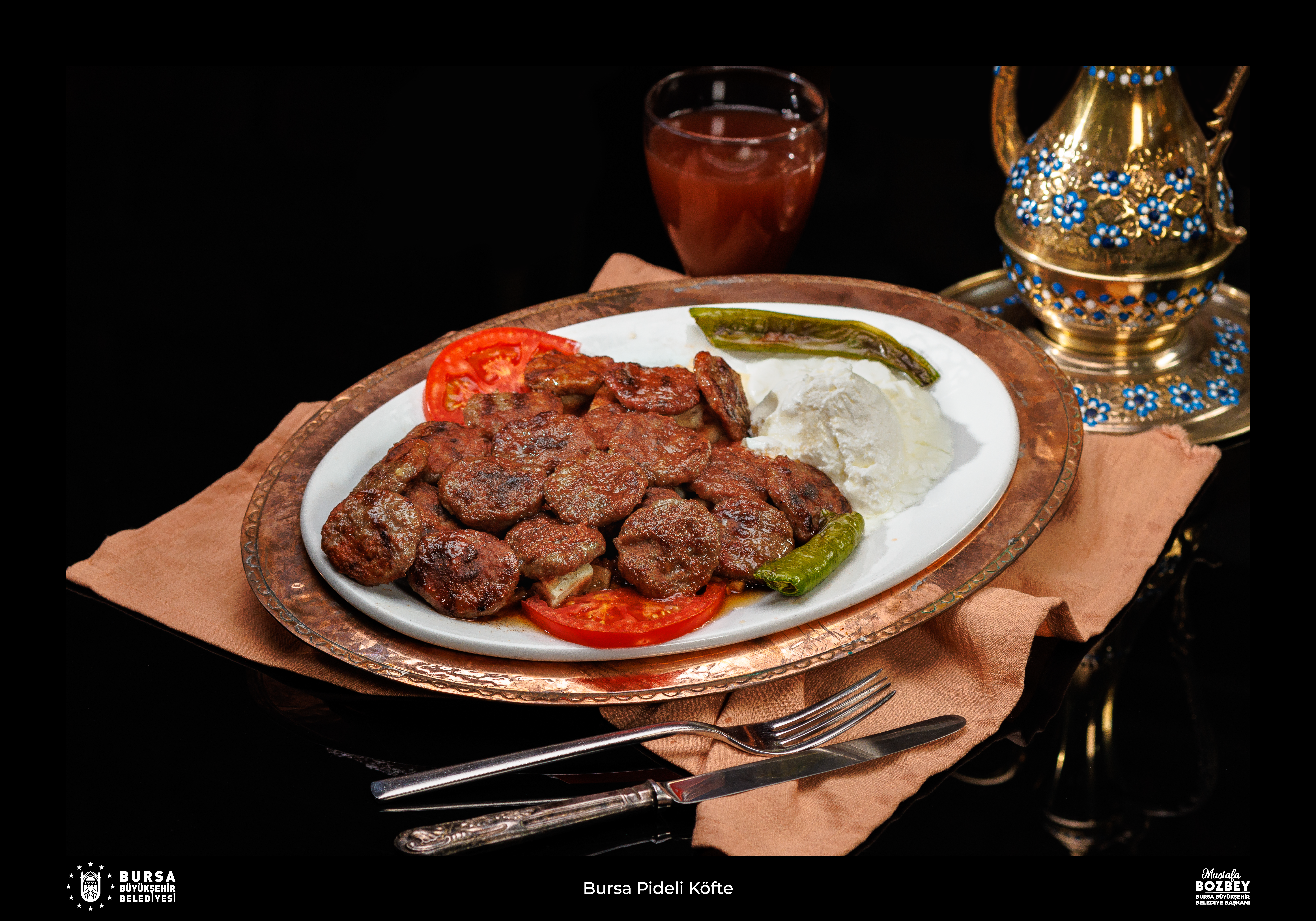
- Don't Leave Without Eating Pita Kofta
It is a local flavour that you can find only in Bursa with its presentation, content and materials. This flavour, which is also included in the work of Evliye Çelebi who was the most famous traveler in Ottoman Empire, is one of the most important local dishes of Bursa cuisine for centuries. It is known as a flavor that emerged in the kofta shops of Bursa’s Kayhan Bazaar. On the fried pita which is used in its construction, the famous meatballs of Kayhan Bazaar are placed and then butter is rolled with tomato sauce. Before it is served, yogurt put on the edge to this flavour.
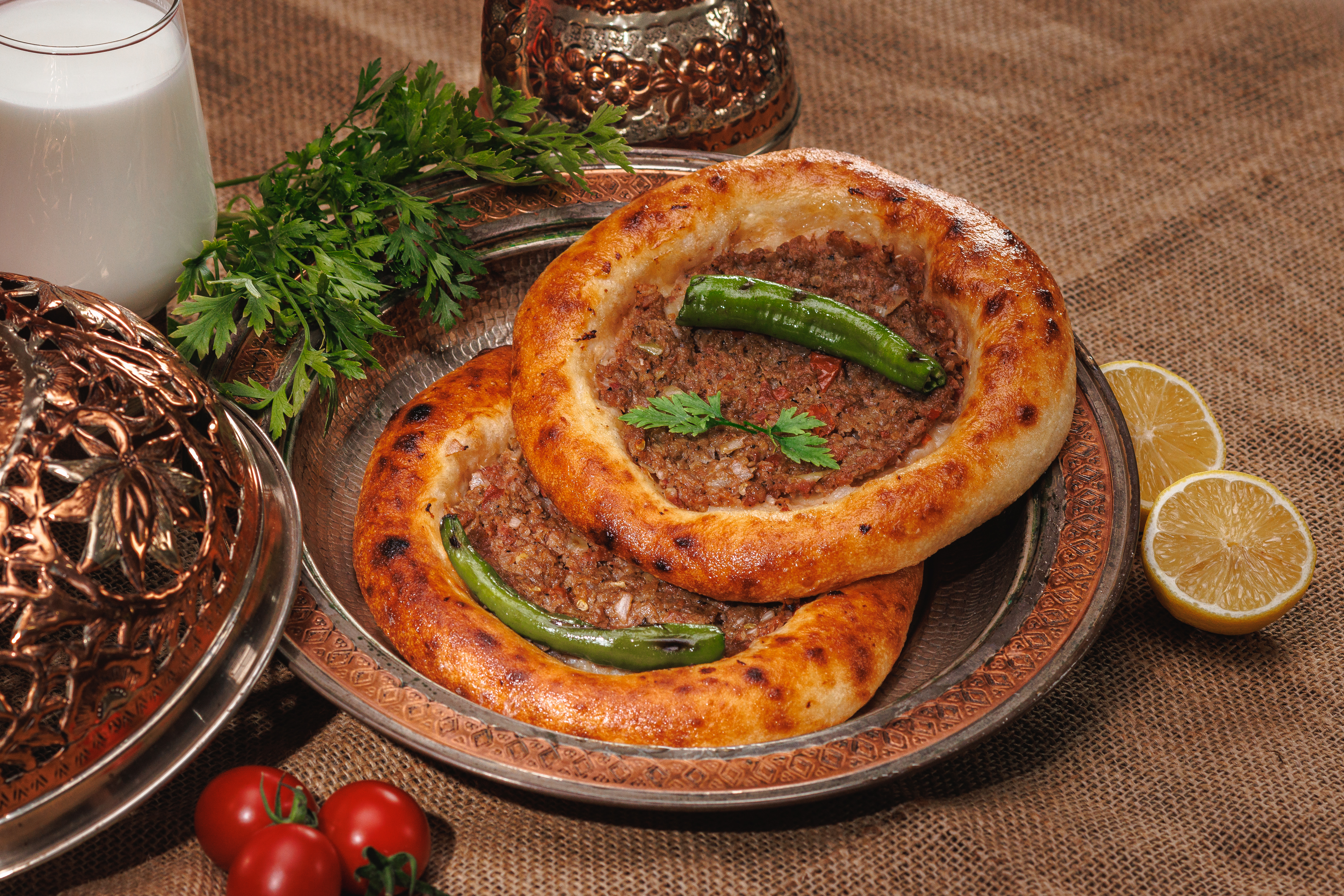
- Taste Cantik, a flavor unique to Bursa
This flavour, which is made by different bakeries of Bursa, especially the historical Kayhan Bazaar, is a unique pita variety of Bursa with its style and presentation. A mixture of minced or meat cubes with a rich content is put on the fermented dough and cooked in historical stone ovens. And then made ready for service.

For All Requests, Complaints, and Questions
444 16 00

